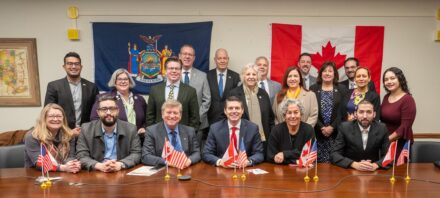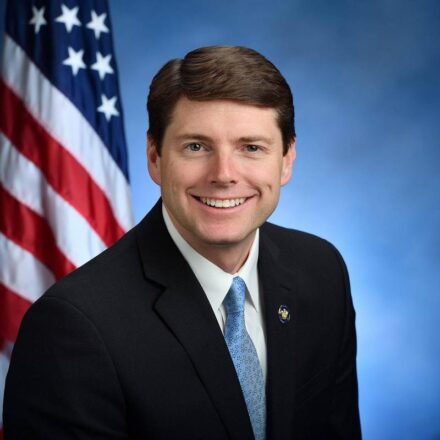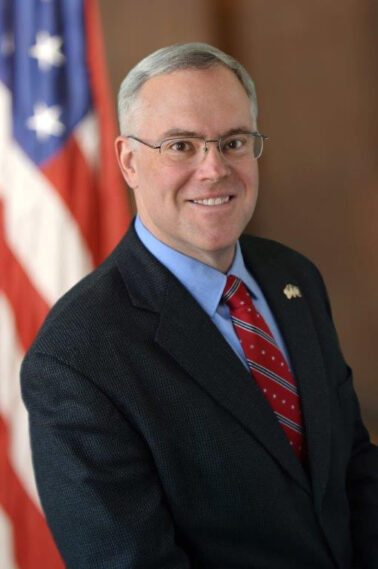Before the shooting of border patrol officer, visitors took interest in a remote Northeast Kingdom property
Posted: February 7th, 2025 under Border News, Law Enforcement News, National News, Regional NY-VT News.
Comments: none
A free community news service for Peru, NY

Posted: February 7th, 2025 under Border News, Law Enforcement News, National News, Regional NY-VT News.
Comments: none
Posted: February 7th, 2025 under Arts and Entertainment, City News, Northern NY News.
Comments: none
Department policies and procedures were adopted too late!
Posted: February 7th, 2025 under Fire Department News, Law Enforcement News, Upstate New York.
Comments: none
Posted: February 6th, 2025 under Adirondack Region News, Education News, Northern NY News, State Government News.
Comments: none
|
Posted: February 6th, 2025 under Adirondack Region News, Business News, General News, National News, Northern NY News, Peru/Regional History.
Comments: none

Members of the New York-Canada Relations Task Force join members of the General Consul of Canada in New York’s delegation for a photo after a breakfast meeting.
1/6/25 – Assemblyman Jones News Release – This week, Assemblyman Billy Jones (D-Chateauguay Lake) welcomed the General Consul of Canada in New York, Tom Clark, in Albany. Joining Consul General Clark were Deputy General Geoff Gartshore, Quebec Delegate General David Brulotte, Consul and Senior Economic Officer of Ontario Trade and Investment Office in New York Aaron Pinto, and representatives from Immigration, Refugees and Citizenship Canada and the Royal Canadian Mounted Police.
In celebration of the Consul General’s visit, Jones sponsored a Resolution to Proclaim Monday, February 3rd, as Canadian Heritage Day in New York. Trade with Canada supports 520,300 jobs, and more than 800 Canadian-owned companies employ 65,000 New Yorkers. Many of these jobs are right in the North Country’s manufacturing sector. New York also has $28 billion in exports and $50 billion in annual bilateral trade with Canada. Between trade, tourism and proximity to the border, New York has a special relationship with Canada that deserves to be recognized.
On Wednesday morning, Jones also hosted breakfast for the New York Canada Relations Task Force, during which members were able to have an important conversation with the Consul General and his delegation regarding the relationship between the state and Canada. Considering the recent 25 percent tariffs on Canadian goods proposed by the federal government that will impact heating oil, asphalt, cement, lumber, and other building materials and other goods vital to the North Country economy, this was an important discussion to figure out the next steps as we all navigate these new trade laws.
“I want to thank Consul General of Canada in New York Tom Clark and his delegation for returning to Albany to have important discussions about our future,” said Jones. “Canada is our largest trading partner – I oppose the tariffs proposed by the federal government because they will only hurt local businesses and bring higher costs to consumers. We have always had a great relationship with our northern neighbors, and I fear the recent issues with tariffs will be damaging. Our economies are so intertwined that our businesses and residents can prosper with proper trading policies. I will continue these conversations with Canadian leadership to ensure that the North Country is ready for what comes next.”
“I thank Assemblyman Billy Jones for his steadfast support for the strong and longstanding relationship between Canada and New York State,” said Consul General Clark. “Jones has demonstrated an unyielding commitment to protecting and enriching the economic and diplomatic ties that are essential to our mutual prosperity and security. We are equally committed to this relationship because we know we win together. This is a friendship that has stood the test of time, and we will continue to be good friends and neighbors.”
Posted: February 6th, 2025 under Adirondack Region News, Agricultural News, Business News, General News, Political News, State Government News, State Legislator News.
Comments: none
Posted: February 6th, 2025 under National History, National News, Political News.
Comments: none
Posted: February 6th, 2025 under Education News, Peru/Regional History, State Government News, State Legislator News, Statewide News.
Comments: none
Posted: February 6th, 2025 under Adirondack Region News, Arts and Entertainment, Northern NY News, Things to do in & near Peru.
Comments: none
Posted: February 6th, 2025 under City News, Law Enforcement News, Regional NY-VT News.
Comments: none
 What: Chicken & Biscuit Dinner
What: Chicken & Biscuit DinnerPosted: February 5th, 2025 under Adirondack Region News, Charity Events, Community Events, Northern NY News, Peru News, Veterans' News.
Comments: none
Posted: February 5th, 2025 under Charity Events, Community Events, Northern NY News, Peru News.
Comments: none
Posted: February 5th, 2025 under Law Enforcement News, State Government News.
Comments: none
Posted: February 5th, 2025 under Business News, Regional NY-VT News.
Comments: none
Posted: February 5th, 2025 under Corruption in Gov't., Law Enforcement News, State Government News, Upstate New York.
Comments: none
Story Update – 2/5/25 – Click here for the MYNBC5 story
Town of Harrietstown
Franklin County
Snowmobile Accident: On Feb. 1 at 2:20 p.m., Ray Brook Dispatch called NYS Forest Ranger Adams about a snowmobile accident near McCauley Pond. Ranger Adams was on snowmobile patrol and reached the scene with Ranger O’Connor at 2:45 p.m. Saranac Lake Rescue and Saranac Lake Volunteer Fire Department were assisting the 39-year-old subject from New Jersey. Rangers Lewis and Praczkajlo helped package the patient in a litter and joined rescuers in transporting him to the trail and a staged UTV. An ambulance met the UTV for transport to a Life Net helicopter at Lake Clear Airport, which took the subject to the hospital. New York State Police (NYSP) alerted rescuers that the patient died from his injuries. Resources were clear at 4:41 p.m. Judging by the tracks, NYSP and Rangers determined the snowmobiler lost control around a left turn and crashed into several trees.
Posted: February 4th, 2025 under Adirondack Region News, Law Enforcement News, Northern NY News.
Comments: none
Posted: February 4th, 2025 under Border News, Law Enforcement News, National History, Northern NY News, Political News.
Comments: none
Posted: February 4th, 2025 under Adirondack Region News, Agricultural News, Business News, Congressional News, Northern NY News, Peru/Regional History, Political News.
Comments: none
Posted: February 4th, 2025 under Border News, Business News, National History, National News, Northern NY News, Political News.
Comments: none
Click here for the Syracuse.com story
Posted: February 4th, 2025 under Law Enforcement News, Northern NY News, Peru/Regional History, Statewide News.
Comments: none
 “I am hearing from several North Country businesses, local officials, and consumers who are extremely nervous about the impending tariffs on Canada. The decision to move forward with the broad 25% tariff on Canadian goods will be highly detrimental to consumers and manufacturers in the North Country. Our area transportation equipment companies will be unable to pass along higher costs due to multi-year fixed-price contracts, and non-Canadian manufacturers in the area that need to source raw materials from Canada could see their supply costs increase by $16 million annually. Energy costs will increase as the North Country relies on Canada for 100% of its natural gas, huge quantities of Canadian hydro power help supply our grid, and most of the region’s heating oil and gas come from the Port of Montreal. Construction material prices will also increase as a large quantity of our region’s asphalt, cement, lumber and other building materials come from Canada. Warehouses where Canadian goods are sent for U.S. distribution will see diminished activity, which could impact job availability. Additionally, consumers can expect the cost of food, vehicles, and homes to rise. Canada has responded with 25% tariffs on several U.S. goods, especially agricultural products, which will severely impact our farmers. Canada has been a wonderful partner in helping build the North Country economy that has brought new businesses, jobs, and goods to our region for many years, and these tariffs will stifle that collaboration. Our region has always welcomed our neighbors to the North with open arms, and I fear that these tariffs will negatively impact our friendly relationship. I hope that this decision is short-lived, and I will work with local and federal partners to encourage a reversal of these tariffs as soon as possible.”
“I am hearing from several North Country businesses, local officials, and consumers who are extremely nervous about the impending tariffs on Canada. The decision to move forward with the broad 25% tariff on Canadian goods will be highly detrimental to consumers and manufacturers in the North Country. Our area transportation equipment companies will be unable to pass along higher costs due to multi-year fixed-price contracts, and non-Canadian manufacturers in the area that need to source raw materials from Canada could see their supply costs increase by $16 million annually. Energy costs will increase as the North Country relies on Canada for 100% of its natural gas, huge quantities of Canadian hydro power help supply our grid, and most of the region’s heating oil and gas come from the Port of Montreal. Construction material prices will also increase as a large quantity of our region’s asphalt, cement, lumber and other building materials come from Canada. Warehouses where Canadian goods are sent for U.S. distribution will see diminished activity, which could impact job availability. Additionally, consumers can expect the cost of food, vehicles, and homes to rise. Canada has responded with 25% tariffs on several U.S. goods, especially agricultural products, which will severely impact our farmers. Canada has been a wonderful partner in helping build the North Country economy that has brought new businesses, jobs, and goods to our region for many years, and these tariffs will stifle that collaboration. Our region has always welcomed our neighbors to the North with open arms, and I fear that these tariffs will negatively impact our friendly relationship. I hope that this decision is short-lived, and I will work with local and federal partners to encourage a reversal of these tariffs as soon as possible.”
Posted: February 4th, 2025 under Adirondack Region News, Agricultural News, Border News, Business News, General News, National News, Northern NY News, Political News, State Government News, State Legislator News.
Comments: none
 The Albany Times-Union reports that New York’s Democrats are considering pushing back the date of a special election to fill Elise Stefanik’s congressional seat when she leaves to be ambassador to the United Nations.
The Albany Times-Union reports that New York’s Democrats are considering pushing back the date of a special election to fill Elise Stefanik’s congressional seat when she leaves to be ambassador to the United Nations.
State Senator Dan Stec, who declared his candidacy for the seat in Congress, issued this statement.
Posted: February 4th, 2025 under Adirondack Region News, Congressional News, Corruption in Gov't., General News, Northern NY News, Political News, State Legislator News.
Comments: none
Posted: February 4th, 2025 under Law Enforcement News, Peru/Regional History, Regional NY-VT News.
Comments: none
Posted: February 3rd, 2025 under Community Events, Northern NY News, Peru News.
Comments: none